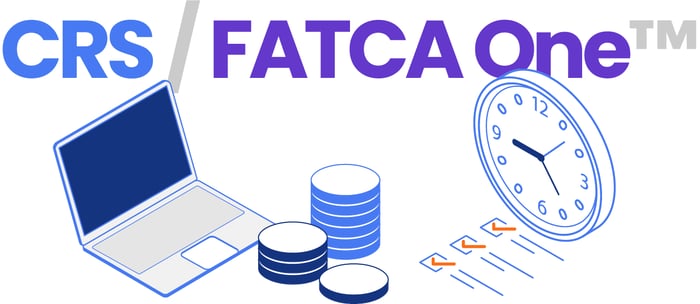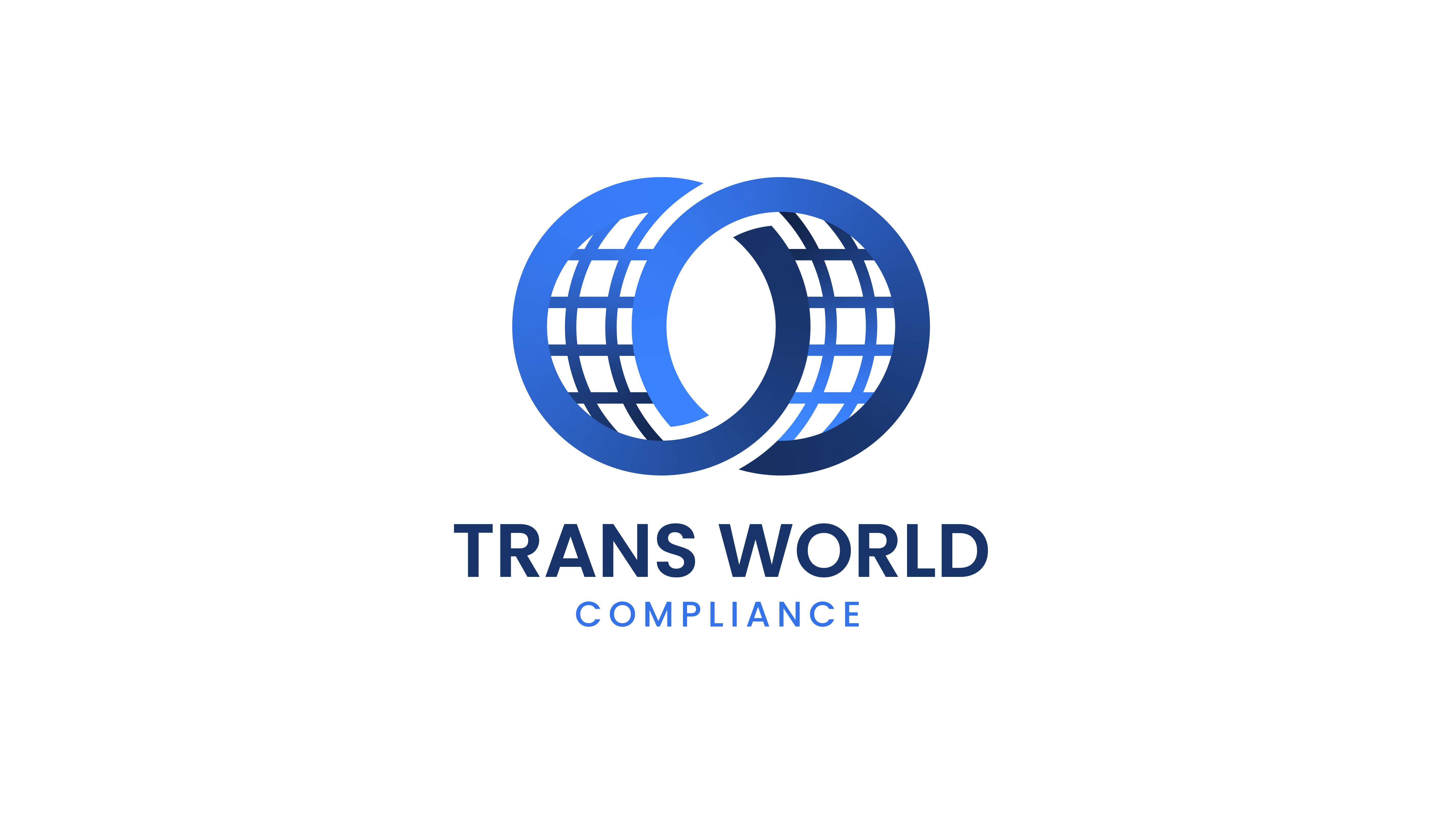Manual vs. Automated Solutions for CRS and FATCA Compliance
At Trans World Compliance, we understand financial institutions' immense responsibility in ensuring compliance with the Common Reporting Standard (CRS) and the Foreign Account Tax Compliance Act (FATCA). These regulations are not just about meeting legal obligations but about maintaining the integrity and trust that institutions have built with their clients and regulatory bodies.
A critical decision that all institutions must face is whether to continue using manual compliance reporting processes or adopt an automated solution. Each approach has distinct advantages and challenges, and choosing between them can significantly impact an institution's efficiency, accuracy, and overall compliance strategy.
The Role of Manual Compliance Processes
Manual compliance involves human involvement at every step—collecting data, validating it, preparing reports, and rectifying errors. This approach has been the traditional method for many institutions, particularly smaller ones, that may not have the resources to invest in sophisticated technology. Our data indicates that about 48% of organizations still rely on manual processes, especially those managing fewer than 500 accounts.
For these organizations, manual processes offer a level of control and direct oversight that can be reassuring. Employees who are intimately familiar with the institution's operations handle the data, which can make sense for smaller datasets or less complex reporting requirements. Familiarity and direct involvement can be beneficial, especially when the scale of operations is manageable, and the risk of errors seems low.
However, there are inherent risks and limitations with manual processes. The most significant of these is the susceptibility to human error. Even the most diligent employees can make mistakes—especially when handling repetitive tasks over large volumes of data. These errors can lead to inaccurate reports, resulting in penalties or non-compliance issues.
Additionally, manual processes can become increasingly inefficient as the institution grows. More accounts mean more data to handle, and what might have been a manageable task with a small dataset can quickly become overwhelming. The process becomes not only time-consuming but also resource-intensive, often requiring more staff and longer hours to complete the same tasks that could be automated.
The Benefits of Automated Solutions
In contrast, automated solutions are designed to alleviate many of the burdens associated with manual compliance processes. These solutions use software to handle data collection, validation, error detection, and report generation, significantly reducing the need for manual intervention.
At Trans World Compliance, we have observed a growing trend where larger institutions, particularly those managing over 1,500 accounts, turn to automated solutions. Approximately 44% of organizations have adopted such systems, recognizing the value of automation in managing their compliance obligations.
The primary advantage of automated solutions is the efficiency they bring to the reporting process. Automation drastically reduces the time and effort required to produce accurate reports. This is particularly important for institutions dealing with large volumes of data or those with complex reporting obligations that manual processes simply cannot handle efficiently. Automated systems apply compliance rules consistently, ensuring that data is validated according to the latest regulatory standards. This consistency minimizes the risk of human error, which is especially crucial when non-compliance can lead to significant penalties.
Another significant benefit of automation is its adaptability. Regulatory environments are dynamic, and compliance rules can change, requiring institutions to stay up-to-date to avoid penalties. Automated solutions can be updated to reflect these changes, ensuring that your institution remains compliant without requiring extensive manual adjustments. This adaptability is particularly beneficial for institutions operating across multiple jurisdictions, where regulatory requirements may vary.

Efficiency and Accuracy: A Detailed Comparison
When comparing manual processes to automated solutions, it is essential to consider both efficiency and accuracy, as these factors directly impact an institution's ability to meet its compliance obligations effectively.
Manual Processes:
Manual processes can vary widely in efficiency depending on the institution's size and the data's complexity. Manual reporting might be completed in less than a month for smaller institutions with fewer accounts, provided the staff is experienced, and the processes are well-established. However, as the volume of data increases, the time required to complete manual reporting can extend significantly. Many institutions find that manual reporting takes between one to three months, particularly when dealing with more complex data or when multiple layers of review are required to ensure accuracy. In some instances, the reporting process can extend beyond three months, particularly when errors are discovered late in the process, requiring rework and additional checks.
One of the most significant drawbacks of manual processes is the variability in reporting time. This inconsistency can make it challenging for institutions to meet reporting deadlines, increasing the risk of non-compliance. Additionally, the reliance on human effort means that any turnover in staff or lack of experience can further delay the reporting process.
Automated Solutions:
On the other hand, automated solutions bring efficiency and consistency that manual processes cannot match. For example, consider the experience of a prominent bank in Panamá, which initially relied on a manual process involving a team of 10 individuals working for three months to complete their FATCA and CRS reporting. This process was not only time-consuming but also prone to errors, requiring significant resources to identify and correct these mistakes.
After transitioning to our CRS/FATCA One solution, the bank experienced a dramatic improvement in its reporting efficiency. The automated system was able to handle the entire process, reducing the workload from a team of 10 people to just one person, and cutting the reporting time from three months to just five days for FATCA. A significant decrease in errors accompanied this reduction in time, as the automated system could consistently apply the necessary checks and validations to ensure accurate reporting.
The Panamanian bank's case highlights the tangible benefits of automation. Not only did the institution save time and resources, but it also improved the accuracy of its reporting, reducing the risk of penalties and non-compliance. The bank was also able to reallocate its resources more effectively, dedicating less staff to reporting tasks and freeing up time for other critical operations.
Choosing the Right Approach for Your Institution
While the choice between manual and automated reporting processes depends on various factors, automation's advantages make it the superior option for most institutions. Even smaller institutions that may find manual processes manageable should consider the long-term benefits of automation. Automated solutions streamline compliance and provide a level of accuracy and efficiency that manual processes cannot match.
As your institution grows or your reporting obligations become more complex, an automated solution becomes essential. Automation handles more significant volumes of data with precision and consistency, ensuring that your institution stays compliant even as regulations evolve. By reducing the risk of errors and penalties, automation enhances overall operational efficiency and positions your institution for sustained success in an increasingly demanding regulatory environment.
Conclusion
At Trans World Compliance, we believe that the right reporting solution can make a significant difference in how your institution meets its compliance obligations. While manual processes may work for some, the benefits of automation—especially for larger organizations—are clear. By adopting a solution like CRS/FATCA One, your institution can streamline its reporting process, reduce errors, and ensure compliance with CRS and FATCA requirements. We encourage you to consider your institution's specific needs and explore how an automated solution can enhance your compliance efforts.
If you're interested in learning more about how Trans World Compliance can support your institution's reporting needs, we're here to help. Contact us today to discuss the best approach for your organization.




